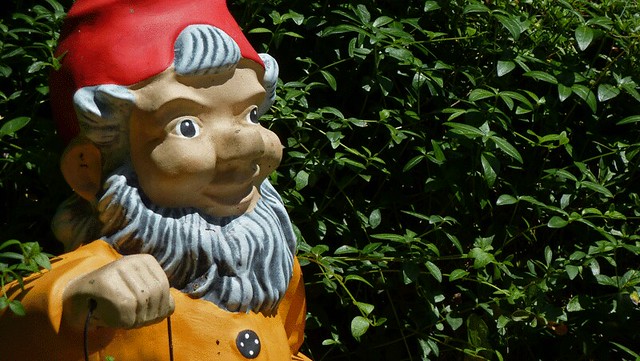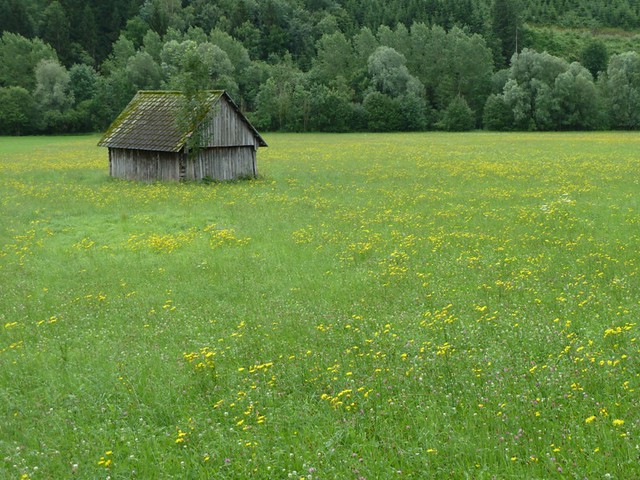
I was very much an “auslander” when I lived in Austria. An outlander. I have fine in-laws who are kind and generous, but I did not have friends here, and I spent huge amounts of time alone. During that time, I covered sections of the Enns Valley on foot, repeatedly. Outlander is a funny word for someone who developed such a personal relationship with the surface of the land.
It is spring, almost summer now and the meadows are so green. They’re speckled with yellow and white flowers, and purple clover, and they almost sparkle under a sky that turns to rain almost every afternoon. The hay sheds still lean off kilter; if they had names I would call out to them from the car as we drive by. I see the hill where I took my first fall on skis, and it is so small without snow. Up that rise is the Knodl Alm, a traditional restaurant that serves bread dumplings and sauerkraut. “Are you sure it’s not the Esel Alm?” asks my husband. “No, I am absolutely certain that’s the Knodl Alm. I know it.”
Back at that turn off is the awkward parking lot, and then, you must go under the little railway bridge. From there, you can continue out to the round Odensee, a tiny blue-black lake. There is a gasthaus (a little restaurant) and in the back are the restrooms and you can walk through in your boots or go around to the side door, it doesn’t matter. There’s a little fishing hut on the edge of the lake and when you race through the trees the light slices on and off like a strobe. Out on the highway is a market where I have stopped for soda and snacks to fuel my wanderings, on foot in spring and summer, on skis in winter.
Further back, the hills turn up, just a little, and the trees are closer together. Just over that rise the meadow is flat as a mirror, there is not even the slightest tilt to the land. Around that bend is a little bridge, and an old fashioned outhouse that is always so clean. A little further along is a place completely protected from the wind so that even on a bitter cold day, you can stand and warm yourself as long as the sun is shining.
Just there is the train station, the trail goes down and back up again where it crosses the creek on a little wooden bridge. There is a little cluster of farmhouses, a block of vacation rental units in a triangular apartment building, There’s a playground, and another wide open meadow, and a brook that’s lined with birch trees on both sides.
I didn’t know the people here at all, but the land, I could draw you a map of it entirely from memory and it would show you where that icy spot is and where you should walk out on to the fishing dock and just up this hill there’s a bench that backs up against a tractor barn and that’s the place we should stop to eat our sandwiches.
Thirty kilometers of gently rolling hills, of flat meadows, of black and white forest. The only thing I really felt I knew here was this stretch of land. I am happy to see it again. An outlander? No. I was very much an outsider, but not to the land. The land and I, we were — are — very much on friendly terms.


You summed it up right there: “Outlander is a funny word for someone who developed such a personal relationship with the surface of the land.”
Beautiful piece.
It is truly strange to return to these “former homes” – when I was back in Germany last year I couldn’t quite believe I’d lived in that town for almost three years, I academically understood I had, but emotionally, perhaps I’d moved on, and it was a bizarre feeling. Particularly as my friends there had also moved on. Perhaps if I’d had the chance to get out into the countryside like you did it would have felt more familiar.
This post reminds me of well me. I can see exactly how you would become an outlander. I spend much of my time alone even when with my wife’s family. Getting to know your surroundings is something wonderful and sadly something not many take advantage of.
Love the image of the shack. Such a wonderful pastoral shot…